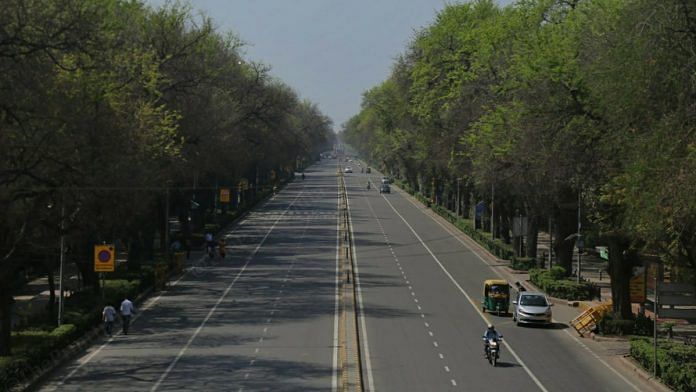New Delhi: As India went into the world’s biggest lockdown to combat the deadly coronavirus, trains, planes, automobiles and factories came to a halt. And the skies in some of the most polluted cities on the planet turned blue.
Cities across the country, which was home to 14 of the 20 most polluted cities in the world last year, are breathing some of the cleanest air after Prime Minister Narendra Modi announced a three-week nationwide lockdown, starting March 25. On April 7, only two cities from India figured in the top 20 most polluted places, according to data from IQAir.
“The low AQI and blue skies prove beyond doubt that a lot of the air pollution” is a result of human activity, according to Jyoti Pande Lavakare, co-founder of the Indian environmental organization Care For Air. “Obviously slowing down the economy to such a degree isn’t the ideal way of bringing down air pollution but at least it proves that it can be done, if the intention is there.”
Modi’s unprecedented move to impose the lockdown may have been the only way to enforce social distancing in the densely populated nation of 1.3 billion people, where cases have surpassed 4,900 and experts fear that number could increase dramatically over the next few weeks as testing increases.
Also read: Indian zoos and national parks on Covid-19 alert after tiger tests positive in US
The lockdown improved the air quality index to satisfactory levels in nearly 90% of the 103 cities monitored by the country’s Central Pollution Control Board on March 29, according to data on the environmental agency’s website. In contrast, about half the cities it monitored in the middle of last month had satisfactory air.
The clean air could aid the country’s battle against the pneumonia-like virus as air pollution makes people more vulnerable to lung disease. The World Health Organization estimates that dirty air kills 7 million people globally primarily through increased mortality from diseases including acute respiratory infections. In India, it’s also leading to a sharp drop in complaints from people with respiratory problems, according to Delhi-based pulmonologist Pankaj Sayal.
“We are now able to treat asthmatic patients with minimum medications,” Sayal said. “Right now, in this season, I’m getting only 20% to 30% of the calls” he would get earlier.
Still, the clean air has come at a cost and is likely to be short-lived. India is set to focus on getting its factories and businesses going again after the lockdown forced hundreds of thousands to flee cities in a mass exodus unseen since India’s independence in 1947. The economy is poised to shrink this quarter and full-year expansion set to suffer markedly due to the standstill.
“If the economic restart isn’t done mindfully, pollution will come roaring back as industries try and catch up,” Pande Lavakare said. “I expect this winter to be worse than usual,” as there could be a temptation to relax emission norms to revive the economy.
The haze that shrouds India’s capital for much of the year has become a symbol of the South Asian nation’s struggle to contain toxic air. Emissions from millions of vehicles, industries and coal-burning power plants are some of the main contributors to pollution as the country prioritizes growth to pull millions out of poverty. Pollution intensifies from fall onward as rice farmers burn the stubble of the harvested crop and lower temperatures trap the pollutants.
“This lockdown is uncomfortable, and no country would have wanted it,” but it’s giving data on how air quality and health indices change before and after the lockdown, Sayal said. There is economic disaster but it also “improves the quality of life because the air has become better. Delhi’s air breathes like a mountain air after the rains now.”-Bloomberg
Also read: Shops open on alternate days, schools shut — states want to phase out lockdown after 14 April




Hello,
As a reader, I wish that if i am reading an article in topic as technical as you have picked, some figures, some table, some plots.
If not for all Indian cities, but say four metros.
Please writer, don’t get miffed, I wish these figures were there instead of views and opinions.
Regards
Average Reader